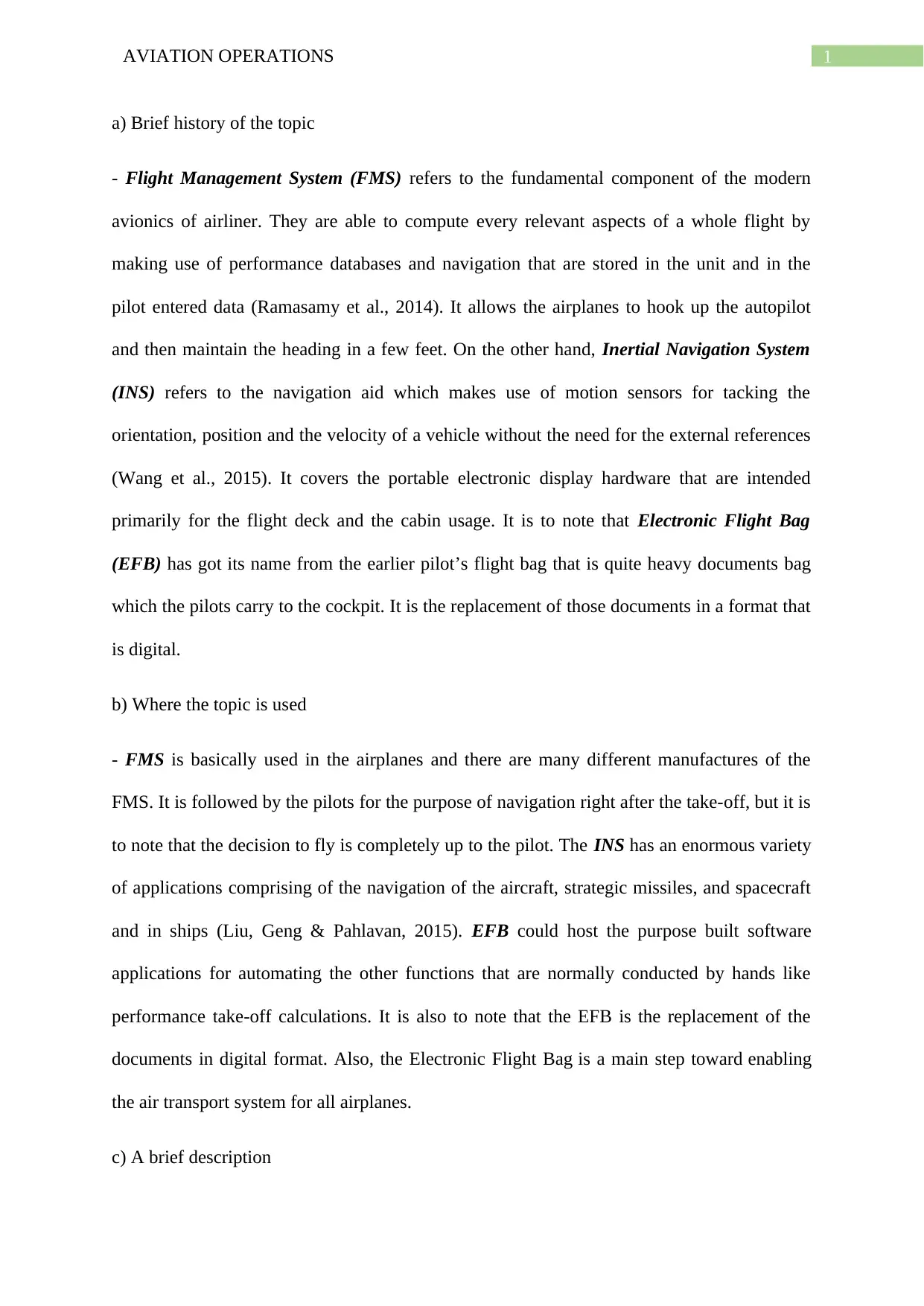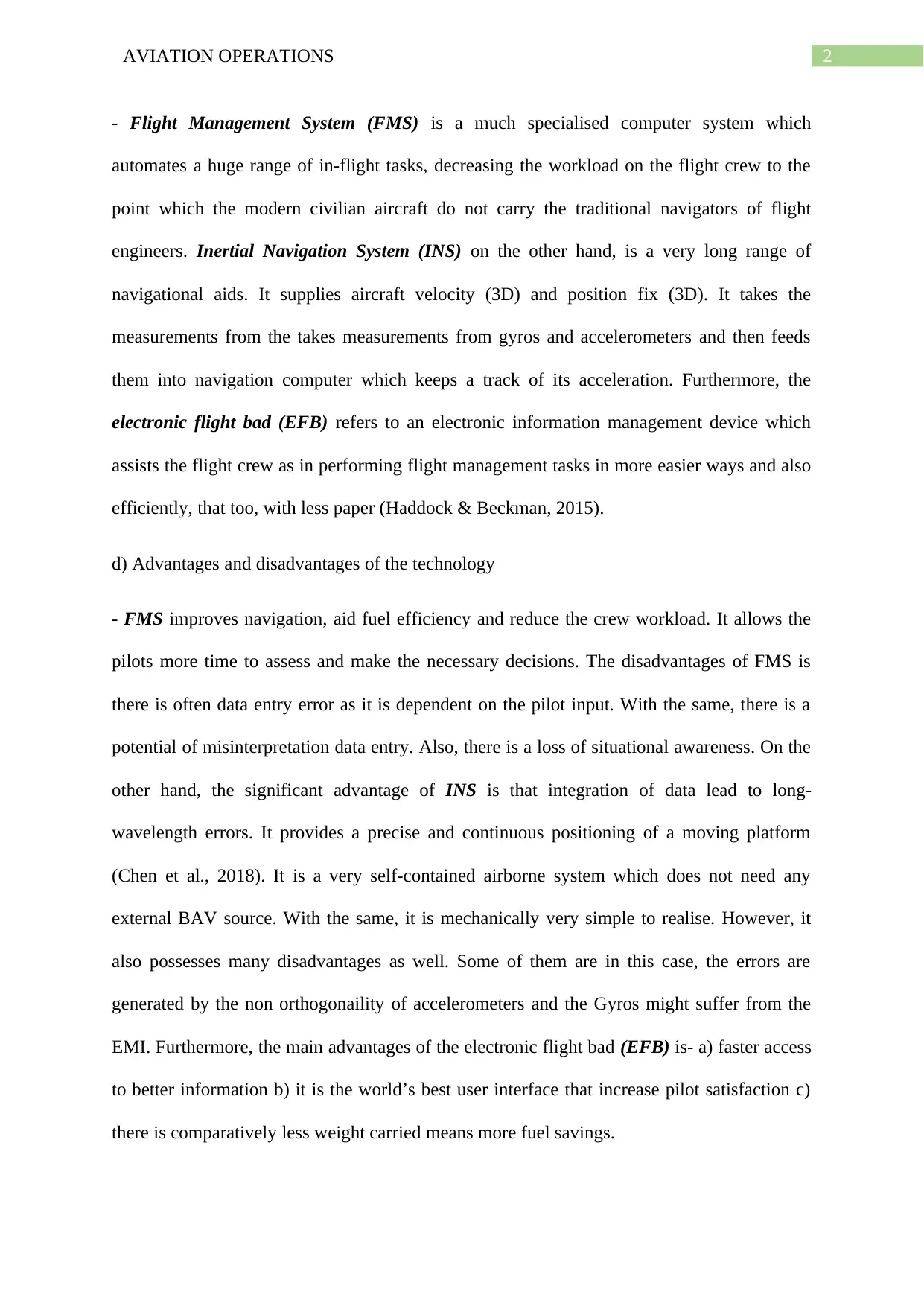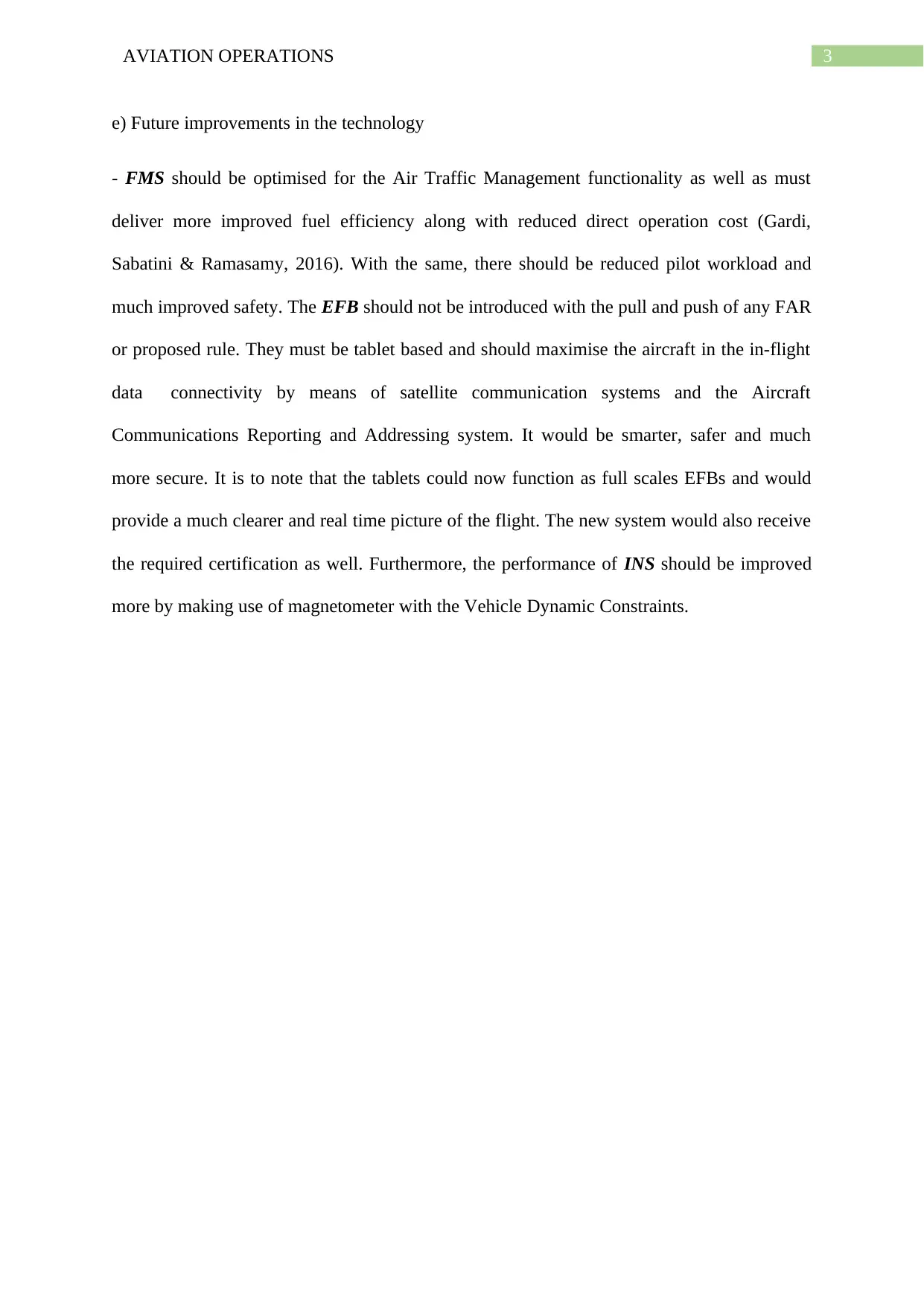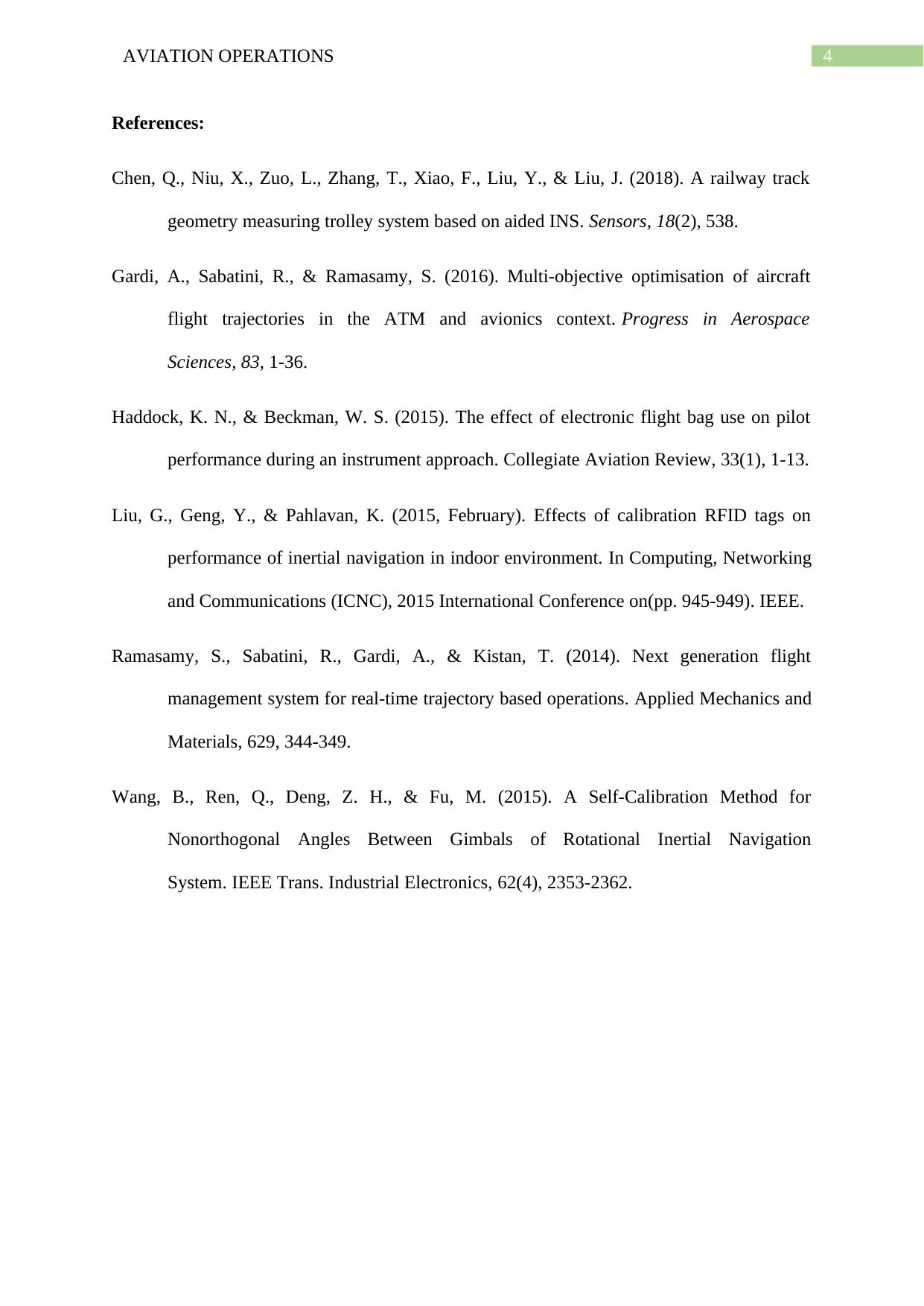University Report: Aviation Operations Analysis of Modern Technologies
VerifiedAdded on 2023/06/04
|5
|1239
|139
Report
AI Summary
This report provides a comprehensive overview of aviation operations, focusing on three key technologies: Flight Management Systems (FMS), Inertial Navigation Systems (INS), and Electronic Flight Bags (EFB). The report begins with a brief history of each technology, explaining their core functions and evolution. It then details the specific applications of each system within the aviation industry, highlighting where and how they are used. The report further describes each technology, providing concise definitions and explanations of their operational principles. A significant portion of the report is dedicated to analyzing the advantages and disadvantages of each technology, including factors such as navigation accuracy, efficiency, pilot workload, data entry, and situational awareness. Finally, the report explores potential future improvements for each system, addressing topics such as integration with air traffic management, fuel efficiency, pilot workload reduction, and enhanced safety features, while also addressing potential improvements in the performance of INS by making use of magnetometer with the Vehicle Dynamic Constraints.
1 out of 5







![[object Object]](/_next/static/media/star-bottom.7253800d.svg)